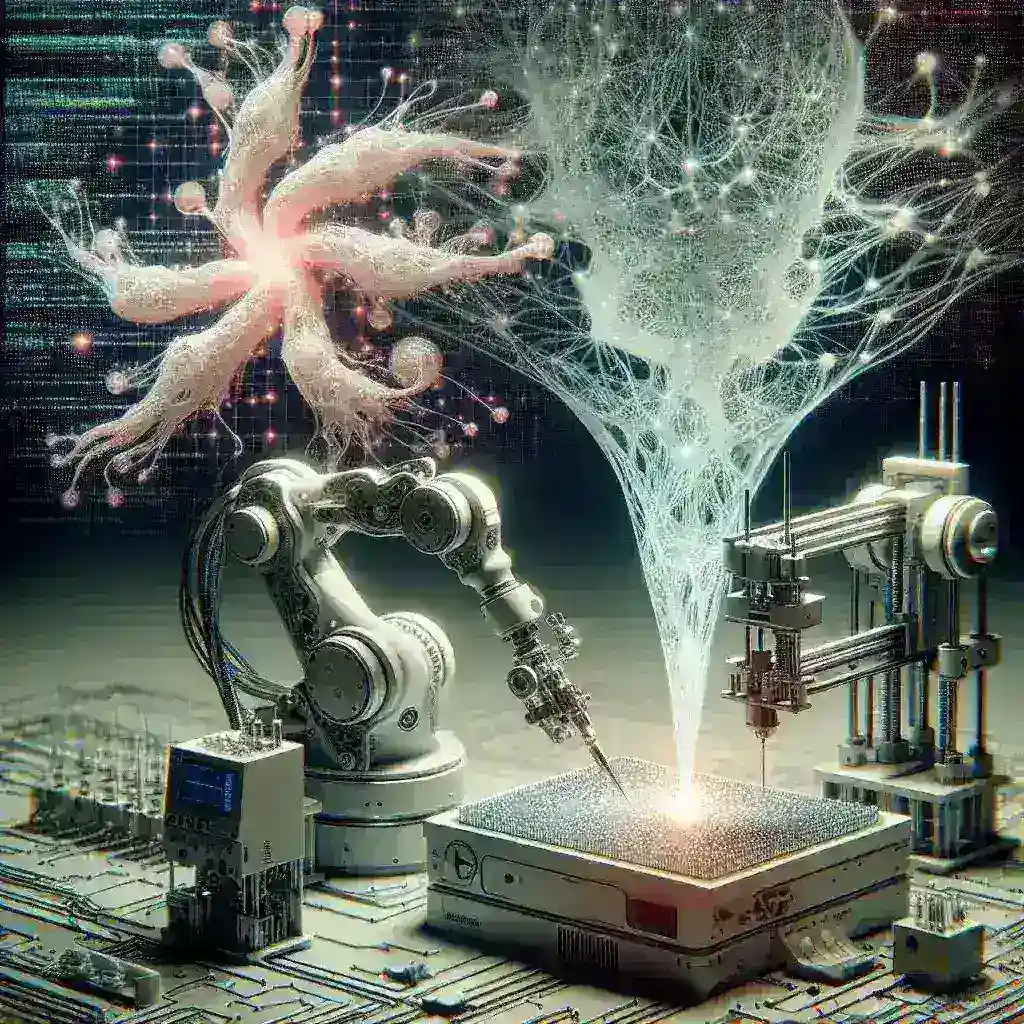Introduction
In the ever-evolving landscape of biomedical engineering, the convergence of artificial intelligence (AI) and robotic bioprinting has unlocked new horizons in regenerative medicine. The development of AI-driven synthetic tissue scaffolds represents a significant leap forward in how we approach tissue engineering and organ regeneration. This article delves into the intricate details of these advancements, exploring their historical context, present applications, and future potential.
Historical Context
The journey of tissue engineering began in the late 20th century, rooted in the need to understand and replicate biological structures. Early research focused on utilizing natural materials for scaffold creation, but the limitations of these materials became evident. The advent of synthetic polymers in the 1990s marked a pivotal moment, enabling the design of tailored scaffolds that could better mimic the properties of human tissues.
Over the years, advancements in 3D printing technology paved the way for more intricate scaffold designs. Robotic bioprinting emerged, leveraging automated precision to create complex structures with greater accuracy. However, the integration of AI has revolutionized this field, allowing for smarter designs and improved functionality.
The Role of AI in Synthetic Tissue Scaffolds
AI plays a crucial role in the creation and optimization of synthetic tissue scaffolds. By analyzing vast datasets, AI systems can predict how different materials will interact with biological tissues, leading to more effective and biocompatible scaffold designs. The integration of machine learning algorithms enables the automatic design of scaffolds tailored to specific applications, reducing the time and resources required for development.
Machine Learning and Material Selection
One of the critical applications of AI in scaffold design is the selection of materials. Traditional methods often involve trial-and-error approaches, which can be time-consuming and inefficient. AI algorithms can analyze the properties of various materials, predicting their performance based on prior experimental data. This capability allows researchers to identify the most suitable materials for specific tissue applications, such as skin, cartilage, or bone.
Design Optimization
Beyond material selection, AI enhances scaffold design through optimization techniques. Algorithms can simulate how different scaffold geometries affect cell behavior, guiding researchers in developing designs that promote cell adhesion, proliferation, and differentiation. This optimization process is essential for creating scaffolds that not only support tissue growth but also encourage the desired biological responses.
Robotic Bioprinting: A Technological Marvel
Robotic bioprinting represents the cutting-edge technology that facilitates the creation of synthetic tissue scaffolds. Utilizing robotic arms equipped with precise dispensing tools, researchers can layer bioinks—composed of cells and biomaterials—into intricate structures. This method allows for unparalleled control over the spatial arrangement of cells, leading to more functional and life-like tissues.
Advantages of Robotic Bioprinting
- Precision: Robotic bioprinters can achieve micrometer-level accuracy, ensuring that scaffolds are built according to exact specifications.
- Scalability: The ability to automate the printing process allows for larger-scale production of scaffolds, making it feasible for clinical applications.
- Customization: Robotic systems can easily switch between different bioinks, enabling the creation of personalized scaffolds tailored to individual patient needs.
Applications in Regenerative Medicine
The potential applications of AI-driven synthetic tissue scaffolds in regenerative medicine are vast and varied. Below are some of the most promising areas:
1. Skin Regeneration
One of the most immediate applications of synthetic tissue scaffolds lies in skin regeneration. Patients with severe burns or chronic wounds can benefit from these engineered scaffolds, which provide a supportive matrix for skin cells to grow and regenerate.
2. Cartilage Repair
In orthopedics, the ability to regenerate cartilage is a significant challenge. AI-driven scaffolds can be designed to mimic the unique properties of cartilage, promoting cell growth and integration with existing tissues.
3. Organ Engineering
Perhaps the most ambitious application is the engineering of entire organs. While still in the research phase, AI-driven scaffolds hold the potential to create complex organ structures that could one day be transplanted into patients, addressing the critical shortage of donor organs.
Future Predictions and Challenges
Looking ahead, the future of AI-driven synthetic tissue scaffolds generated by robotic bioprinters appears promising. The combination of AI and bioprinting will likely lead to better patient outcomes, reduced recovery times, and more effective treatments. However, challenges remain, including regulatory hurdles, ethical considerations, and the need for extensive clinical trials.
Ethical Considerations
As we venture further into the realm of tissue engineering, ethical considerations surrounding the use of AI and bioprinting must be addressed. Questions regarding the source of bioinks, the implications of creating living tissues, and the potential for organ commodification pose significant challenges that researchers and policymakers alike must navigate.
Clinical Integration
For AI-driven scaffolds to become a standard treatment option, they must undergo rigorous testing and validation in clinical settings. The path from laboratory research to clinical application is often long and fraught with regulatory challenges, making collaboration between researchers and regulatory bodies essential.
Conclusion
AI-driven synthetic tissue scaffolds generated by robotic bioprinters represent a groundbreaking development in the field of regenerative medicine. By combining advanced algorithms with cutting-edge bioprinting technology, researchers are paving the way for revolutionary treatments that could transform the way we approach tissue repair and regeneration. As we continue to push the boundaries of what is possible, the implications for patients and the healthcare system are profound, offering hope for those in need of innovative solutions to complex medical challenges.
As we look to the future, ongoing research, ethical considerations, and clinical validation will shape the trajectory of this exciting field, ultimately leading to enhanced patient care and a deeper understanding of human biology.

